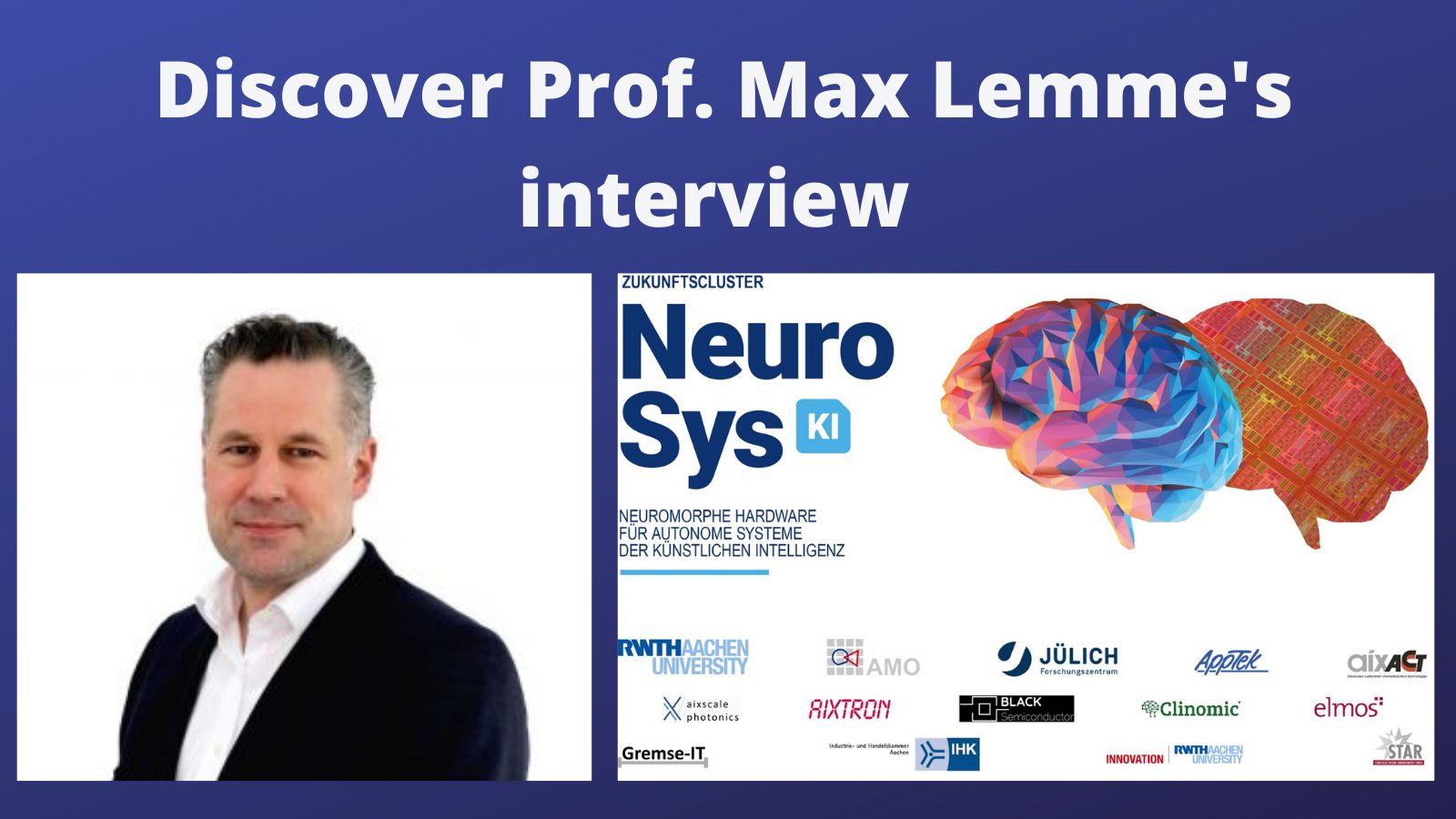Press Release February 2021
Clusters4Future application “NeuroSys” “Neuromorphic Hardware for Autonomous Artificial Intelligence Systems” will be funded for up to 9 years, with up to 45M€.
Congratulations to our SINANO members RWTH Aachen University and Research Center Jülich, part of this « NeuroSys » Consortium coordinated by Prof. Max Lemme – head of the Chair of Electronic Devices at RWTH, Director of AMO GmbH and Chairman of the SINANO Institute.
Interview of Prof. Max Lemme:
- Can you give us an overview of NeuroSys and its goal?
NeuroSys is a Cluster – more than a project – that focusses on all aspects of Neuromorphic Computing, in particular its hardware aspects based on memristive devices. However, it includes the entire value chain. We aim to realize energy efficient post von-Neumann computing hardware for future autonomous artificial intelligence systems.
The project is based on the expertise of various research groups in Aachen and Jülich in memristive materials, like phase change materials, resistively switching oxides and two-dimensional materials. Then it includes circuit designers, computing architecture experts, as well as computer vision and speech processing researchers, to enable hardware/software co-design from the start. Finally, we have also included researchers in medical technologies and neuroscientists, as well as colleagues in ethics, sociology and economics. NeuroSys is designed as a Cluster, made up of several research projects. Hence, it was important for us to include also questions on how future AI Systems will affect our daily life, what it means for the job market, and which recommendations should be given to policy makers.
Ultimately, our aim is to become one of the leading regions in the World in Neuromorphic Computing. However, we don’t see the Cluster as a close- club – it embraces other national and European initiatives, such as European FET-Open projects with SINANO partners like EPFL or IUNET. Some examples include the EU projects “Phase Change Switch“, “QUEFORMAL“, “WiPLASH“ or “MISEL“, as well as training opportunities through Marie Sklodowska Curie Training Networks. There are also several regional companies and start-ups involved, and there is an industrial advisory board that includes major multinational corporations.
- Can you explain us the active part of both RWTH and FZJ in it?
Scientists at RWTH Aachen University and Forschungszentrum Jülich have already been able to demonstrate the functionality of neuromorphic devices made of memristive materials. However, there are neither pilot lines nor production capacities worldwide to manufacture or integrate neuromorphic chips on an industrial scale. To take advantage of the great benefits of neuromorphic hardware, we need to develop an entire ecosystem of hardware, design, algorithms, and application-driven software. This is what we are trying to achieve with NeuroSys. For what concerns the three research institutions involved into the Cluster, RTWH Aachen University, the Research Center Jülich and AMO GmbH, they have complementary infrastructures and expertise, which is a major plus for NeuroSys. There are various Cluster projects where all three institutions collaborate, for example towards the integration of memristive electronic devices. There is one project on photonics-based neuromorphic computing, which comprises of RWTH and AMO, while the circuit design is RWTH “territory“. It is really an intricate collaboration, and don’t forget that there are companies on board at all levels of the value chain. Finally, there are several regional actors for technology transfer, the City of Aachen, RWTH Innovation GmbH and the Trade Association to make sure AI finds its way into regional SMEs.
- Why is this very ambitious project important also for Europe?
To be honest, I am absolutely convinced that hardware for AI is going to determine the well-being of our society in the future. If you are a company and you have the better AI chip, you simply have the better product. As Europe, we need to make sure that our companies have secure access and autonomy when it comes to this technology. This includes security by design, controlled avoidance of hardware trojans, hardware-based European values and ethics as a cornerstone of European AI, edge computing and AI to protect data and privacy and so on. Our Cluster can and will contribute towards these European goals, but the overall investments needed to get there are far beyond what is available to NeuroSys and will require a European commitment in a public-private partnership. The recently launched IPCEI on Microelectronics and Communication Technology is a step in the right direction.
More information on: RWTH article
More details on: AMO Neurosys




 Minatec – CROMA
Minatec – CROMA
